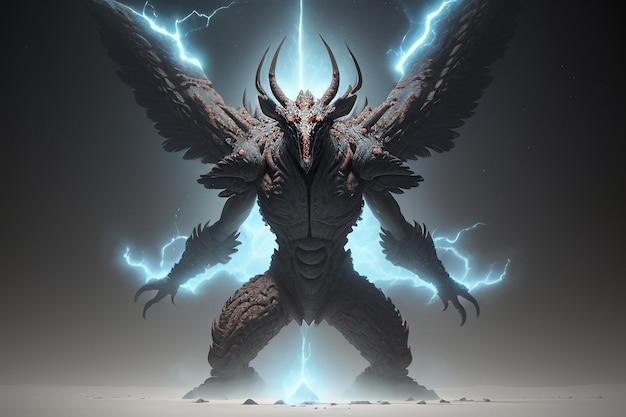Picture this: you’ve spent your entire life trapped in a dark, underground cavern, facing a wall with only shadows dancing before you. These shadows are the only reality you know. But one fateful day, you break free from your shackles and venture out into the dazzling sunlight, beholding the world as it truly is for the first time. This powerful allegory is what philosopher Plato presents in his work “Allegory of the Cave,” and it delves deep into the nature of knowledge and enlightenment.
In this blog post, we will explore the main theme of the “Allegory of the Cave” and unravel its profound insights. We will discuss the idea behind this allegory, explore how knowledge is acquired within its framework, examine the captivating events that unfold at its conclusion, and ultimately delve into the core concept of the journey from ignorance to enlightenment. So fasten your seatbelts as we embark on a philosophical adventure, shedding light on the timeless lessons of Plato’s allegory.

The Significance of Plato’s Allegory of the Cave
Exploring the Depths of Perception and Reality
Plato’s “Allegory of the Cave” serves as a metaphorical illustration of the quest for knowledge and the revelation of truth. This thought-provoking allegory explores the depths of human perception and questions the nature of reality in a captivating and enlightening manner.
Shedding Light on Ignorance
At its core, the allegory presents a group of prisoners, chained in a dark cave since birth, with only flickering shadows as their perception of reality. These shadows represent the illusions and misconceptions that plague human understanding. The prisoners, unaware of their limited perspective, mistake the shadows for real objects. They have become prisoners of their own ignorance.
The Journey toward Enlightenment
The allegory takes a compelling turn when one prisoner is freed from their chains and exposed to the light outside the cave. This newfound freedom leads to a bewildering experience, as the freed prisoner witnesses the true reality that exists beyond the cave. It symbolizes the journey of enlightenment and the pursuit of wisdom.
The Role of the Philosopher-King
Plato further emphasizes the central theme by introducing the concept of a philosopher-king. The philosopher, having escaped the confines of the cave and gained knowledge of the true forms, returns to the cave to enlighten the prisoners. This act of selflessness represents the responsibility of those who possess knowledge to guide and educate others.
The Illusions of the Material World
The allegory highlights the deceptive nature of the material world. The shadows on the cave wall, created by objects manipulated behind the prisoners, mirror the illusions of the physical world. Plato suggests that what we perceive through our senses might only be a distorted version of reality, subject to manipulation and deception.
Seeking Ultimate Truth
The overarching theme of the “Allegory of the Cave” revolves around the pursuit of truth and the transformation it brings. Plato argues that true knowledge exists beyond the sensory realm and can only be attained through philosophical inquiry and introspection. The allegory encourages individuals to challenge their preconceived notions and societal constructs in an ongoing quest for enlightenment.
Embracing the Light of Knowledge
In summary, Plato’s “Allegory of the Cave” prompts us to reflect on the limitations of our perceptions, the illusions that cloud our understanding, and the transformative power of knowledge. By embracing the light of knowledge and seeking the truth beyond our immediate senses, we can break free from the confines of ignorance and embark on a journey of intellectual and personal growth.
Eager to unravel the depths of philosophical wisdom, Plato’s allegory captivates our curiosity and encourages us to question the world around us. So, let us embark on this enlightening expedition, in search of truth, guided by the timeless lessons of the “Allegory of the Cave.”

FAQ: What is the main theme of Allegory of the Cave?
What is an opinion and how do we get our knowledge in Allegory of the Cave
In the allegory of the cave, opinions are often portrayed as mere shadows of reality. In this philosophical tale, Plato suggests that the majority of people are living in a state of ignorance, mistaking illusions for truth. To gain true knowledge and understanding, individuals must venture beyond the cave and free themselves from the chains that bind them to their limited perspectives.
What is Allegory of the Cave and the idea behind it
Allegory of the Cave is a thought-provoking allegorical scenario presented by the ancient Greek philosopher, Plato. The concept is a metaphorical representation of the human condition, highlighting the difference between perceived reality and ultimate truth. In this allegory, prisoners are held captive within a dark cave, facing a wall where shadows are cast by objects behind them. For these prisoners, the shadows become their only reality. The idea behind this allegory is to challenge individuals to question the nature of their reality and strive for enlightenment beyond the illusions that surround them.
What happens at the end of the Allegory of the Cave
At the end of the Allegory of the Cave, one of the prisoners manages to escape the confines of the cave and steps into the outside world. Initially, this prisoner is overwhelmed by the brightness of the sun but gradually adapts to the new surroundings. The escapee is then compelled to return to the cave to free the other prisoners and enlighten them about the true nature of reality. However, upon sharing his newfound knowledge, the other prisoners dismiss him as insane and choose to remain in their comfortable ignorance.
What is the main theme of the Allegory of the Cave
The main theme of the Allegory of the Cave is the quest for knowledge and enlightenment. Plato uses the metaphor of the cave to illustrate the human journey from ignorance to wisdom. The prisoners symbolize the ordinary people who are unaware of the true reality outside of their limited perceptions. The escapee represents the philosopher or enlightened individual who seeks knowledge and understanding beyond the illusions of the world. The allegory highlights the importance of questioning and challenging our beliefs in order to attain true enlightenment and liberation from the shadows of ignorance.
So there you have it! The Allegory of the Cave provides a captivating exploration of the human condition and our relentless pursuit of knowledge and truth. Next time you find yourself questioning the nature of reality, just remember Plato’s wise prisoners and their journey from darkness to enlightenment.
